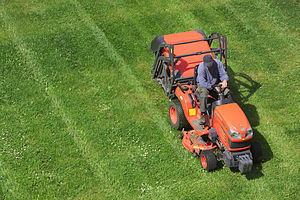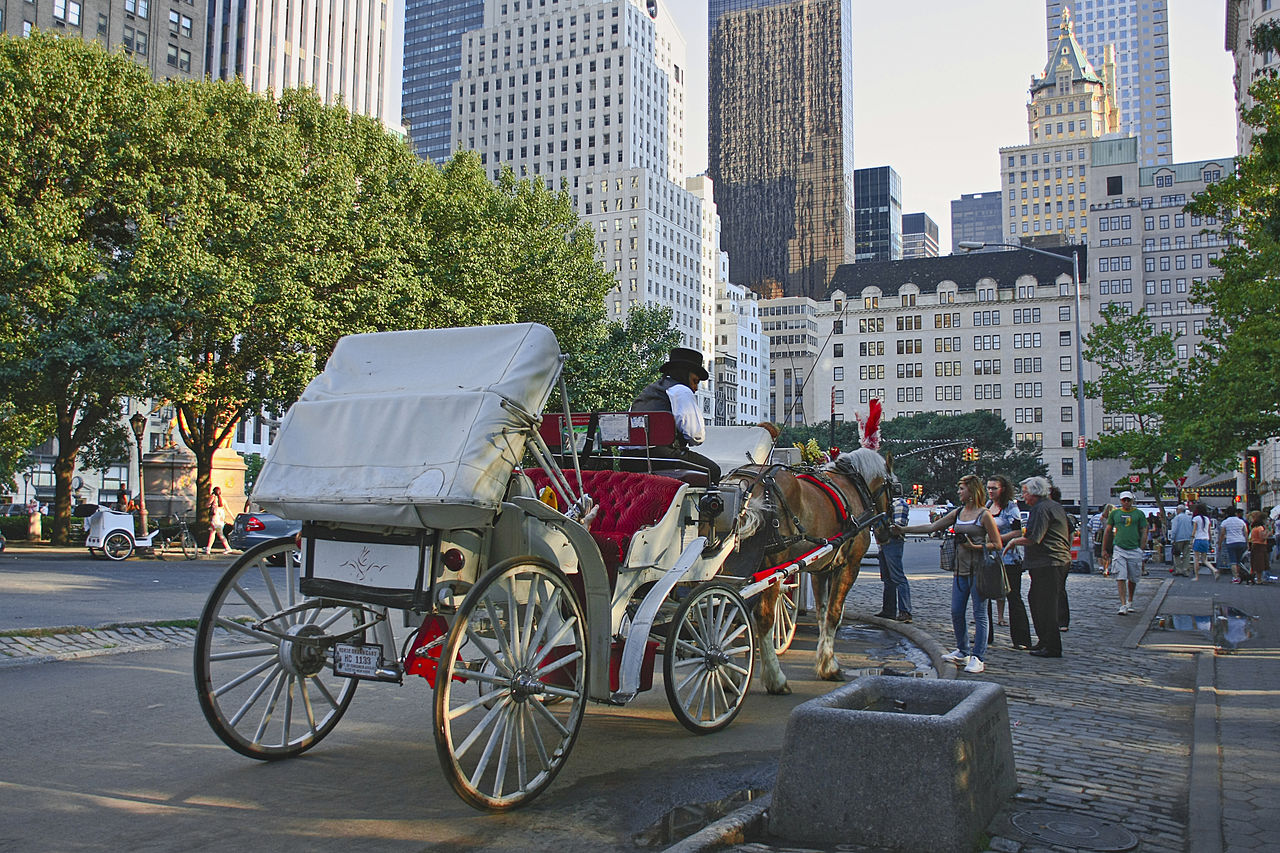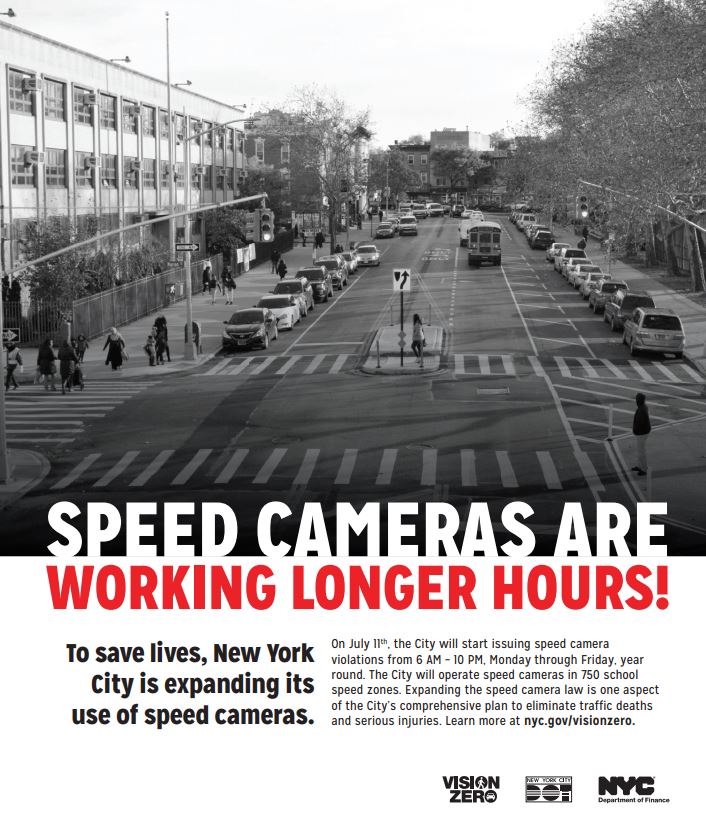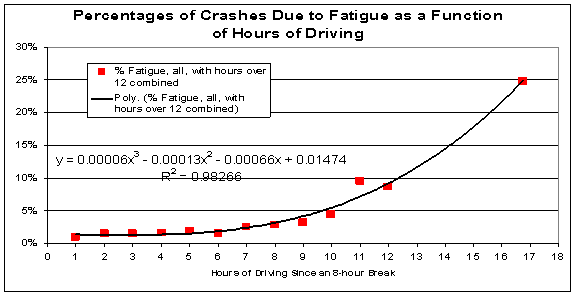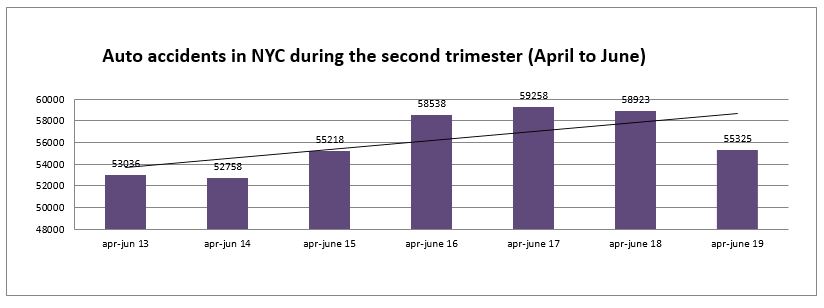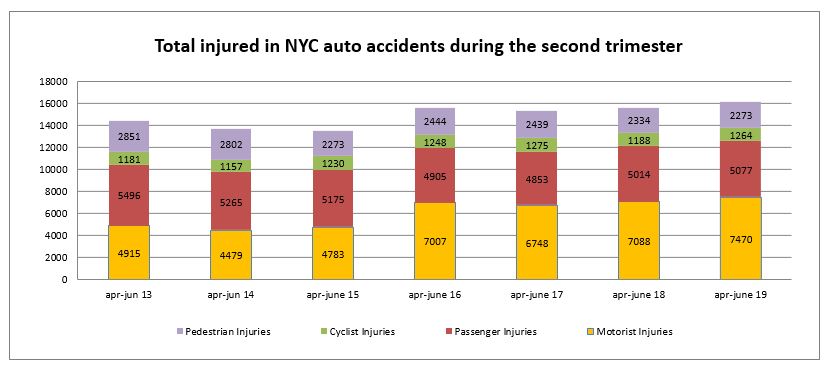51 pedestrians, 13 cyclists 11 passengers and 28 motorists died in auto accidents in New York City during the first semester of 2019. After two consecutive years of decline, traffic fatalities in the city went back above 100 at 101 during the first six months of the year compared to respectively 84, 96, 107, 107, 97 and 121 in the same period of 2018, 2017, 2016, 2015, 2014 and 2013. Fatalities increased for all categories of road users except for motorist deaths which stayed stable at 26 during the first semester of this year and the previous one. 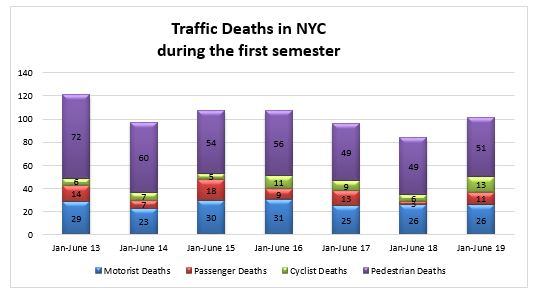
NYC Traffic injuries reached a record high at 29,081 during the first semester of the year compared to respectively 28,544, 27,923, 27,540, 23,530, 24,508 and 26,119 during the first semester of 2018, 2017, 2016, 2015, 2014 and 2013. All category of road users except pedestrians suffered more injuries during this semester than during the previous one.

While the total number of bicycle accidents reported to the NYPD during the first semester of 2019 was slightly lower than the number of accidents reported during the same period of 2018, cyclist fatalities more than doubled during the first six months of the year compared to the first semester of 2018 to reach a record high of 13. Bicycle accident injuries jumped to 1,907, a record high as well. These numbers came as a bad surprise as 6 months earlier, the de Blasio administration which had been promoting using bicycles to commute around the city was proudly announcing that the number of cyclists killed in the city reached a record low of 9 for the entire year of 2018 and that Vision Zero Initiatives were working. A similar pattern occurring in 2015 and 2016 is an indication that despite all Vision Zero improvements, the city remains a dangerous and deadly place to ride a bicycle.
 New York Personal Injury Attorneys Blog
New York Personal Injury Attorneys Blog


